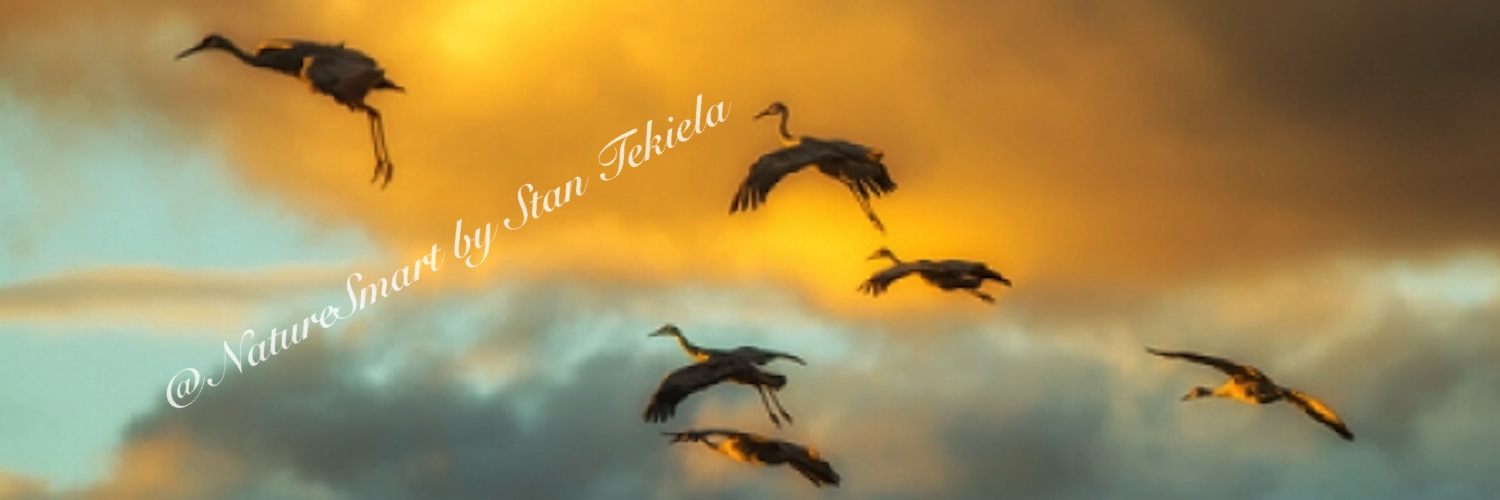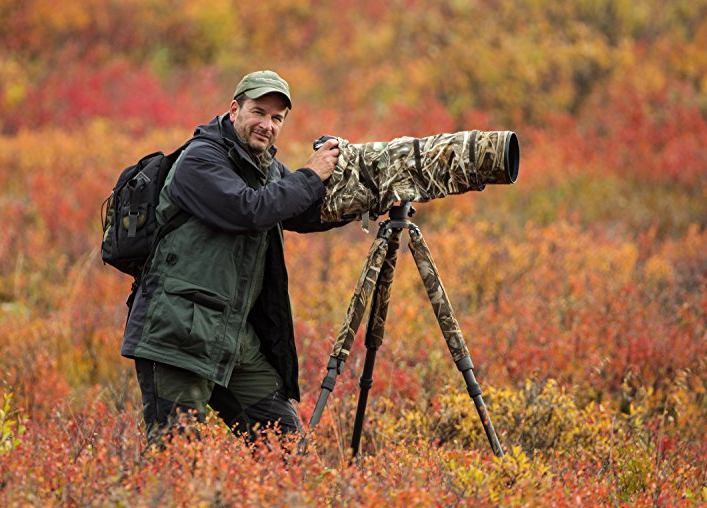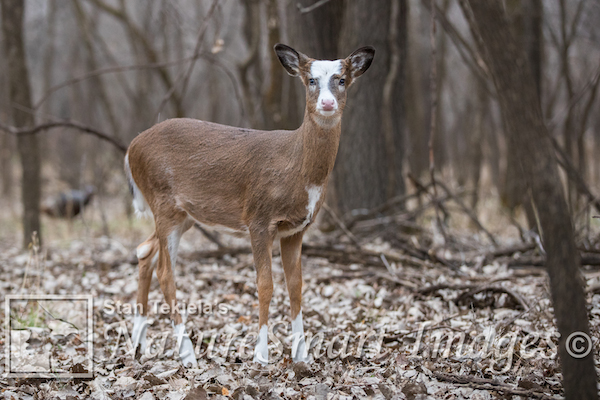
About Deer, Wildlife, and Piebaldism
In today’s post, naturalist and wildlife photographer Stan Tekiela tells us about a young white-tailed deer with piebaldism.
Every now and then nature comes up with a rare or unusual condition. I ran across one of these recently when I had a chance to spend some time photographing a young white-tailed deer with a condition called piebald. Piebaldism is a rare genetic abnormality that can express itself in a wide variety of deformities. The most common of these deformities is a white coat or, more specifically, patches of white on what would normally be a brown deer.

A severe case of piebaldism can also involve a shortening and bowing of the legs. In addition, the hooves are often deformed and the spine can be severely arched. Many of the most severe cases don’t survive very long after birth. Individuals who have a moderate condition can live several years. Those with just the white patches can live a full, long life and even reproduce.
Less than 2 percent of the white-tailed deer population have the piebald condition. Piebaldism is caused by a set of recessive genes that is believed to come from both parents. Or at least both parents need to carry the gene, even if it isn’t expressed (visible). Even more interesting, of the white-tailed deer females that produce twins or triplets, about 25 percent of their young will have different genetic fathers. This is why when twins are born, often only one shows the symptoms of piebaldism. Females with a mild form of piebaldism can reproduce normal fawns if they mate with males who don’t carry the gene.

Piebald white-tailed deer taken in southern Minnesota in the wild
By the way, the word piebald describes a different set of colors, especially spotted or blotched with black and white color. The term originates from a combination of “pie” (from magpie) and “bald” (meaning white patch or spot). It refers to the black and white plumage of the magpie bird. Typically, the word is used to describe horses with irregular patches of two colors, typically black and white. This also works for white-tailed deer, but, of course, they are brown and white.
Some of these animals also exhibit issues with their eyes. Oftentimes a piebald deer has light blue eyes. They also sometimes have pink noses and ears. Piebaldism shouldn’t be confused with albinism or leucism. Albinism is a total lack of pigment throughout the entire body of the animal, along with white fur and pink eyes, ears, and skin. Leucism is a reduction of pigmentation by limiting the production of melanin and other pigments from being deposited in a bird’s feathers or an animal’s fur. The results are patches of white.
I’ve always been fascinated with the rule breakers in nature—you know, the critters who either look or act differently—so it’s always fun to see and document these kinds of animals. Over the decades I’ve had many opportunities to photograph and study pure white deer. In my experience and estimation, there are more pure white deer than piebald ones. Perhaps it’s because severe cases of piebald shorten the animal’s life span.
So the next time you are out and about, remember to look for these kinds of differences in our wildlife.
If you enjoyed Stan’s post, you may consider one of his amazing nature books: Majestic Eagles; The Lives of Wolves, Coyotes, and Foxes; or Backyard Birds: Welcomed Guests at our Gardens and Feeders. Young readers will delight in his award-winning children’s books, such as Whose Butt?, Critter Litter, and his latest, Jump, Little Wood Ducks.
You can follow Stan on Facebook and Twitter, or contact him via his web page. Stan’s nationally syndicated NatureSmart Column appears in more than 25 cities spanning 5 states (Minnesota, Wisconsin, Michigan, Illinois, and Pennsylvania) and is circulated to more than 750,000 readers. Stan’s author page on Amazon features some amazing videos! Check them out, and follow him for updates.
For more stories about wildlife and nature, sign up for our newsletter now!
More posts from Stan:
Indigo Bunting—A Familiar Summer Visitor
The Nesting Behaviors of Sandhill Cranes
Big Birds, Baby Birds, Birds Everywhere
Stan Tekiela observes Marsh Wrens
The Magical, Mystical World of Sandhill Cranes


